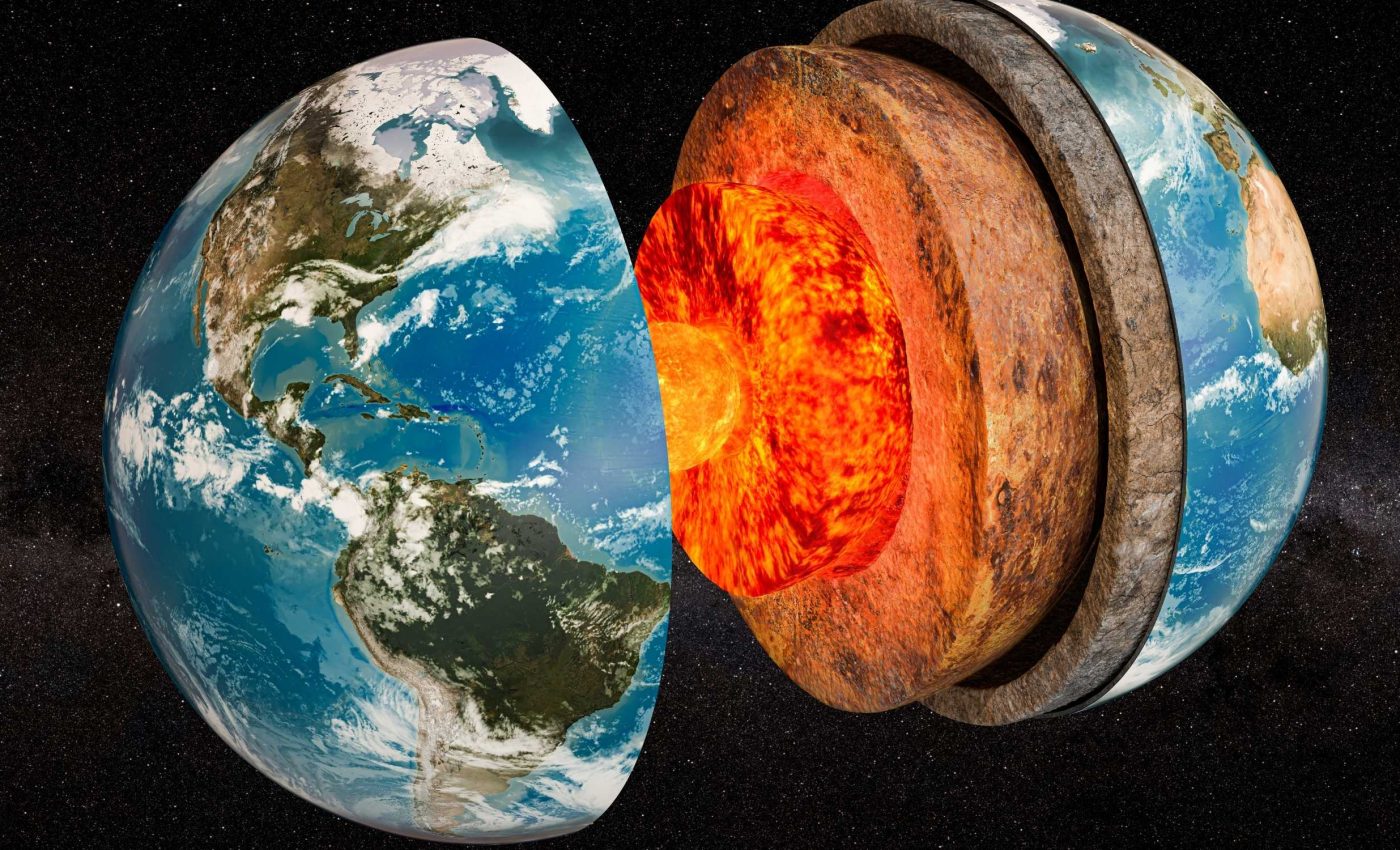
Scientists discover that the oldest continental crust on Earth is disintegrating
Earth’s first continents were supposed to be forever. Their deep roots, more than 120 miles thick, once looked too cold and too strong for the mantle to pry loose.
Now a modeling study led by Professor Shaofeng Liu at the China University of Geosciences shows that even the most time‑tested crust can unravel in slow motion as tectonic forces switch direction and tempo.
Understanding continental crust – the basics
Earth’s continental crust forms the solid, outermost shell of our planet’s lithosphere, making up the continents and continental shelves. It consists primarily of granitic rocks, which are less dense than the basaltic rocks of the oceanic crust.
This difference in composition and density allows the continental crust to “float” higher on the mantle, creating the familiar topography of mountains, plateaus, and valleys.
Unlike the oceanic crust, which is geologically young and typically recycled back into the mantle via subduction zones, continental crust can be billions of years old, preserving a long and complex geological history.
Continental crust forms through processes such as volcanic arc accretion, crustal thickening, and the intrusion of magmatic bodies over time.
Tectonic activity, such as the collision of continental plates, contributes to the thickening and elevation of the crust, leading to the formation of major mountain ranges like the Himalayas.
Origins of stubborn crust
A craton is a continental kernel that formed two billion years ago and cooled until it became buoyant and stiff. Its keystone is a thick lithosphere that locks the block in place while the planet’s younger plates drift overhead.
For decades geologists imagined these keels as geological life preservers. The notion began to wobble when seismic images under eastern China revealed a missing bottom half and unusually hot mantle rock where cold mantle should sit.
The North China Craton once spanned nearly 500,000 square miles and carried Archean rocks older than 2.5 billion years.
In the late Jurassic it collided with the buoyant Izanagi oceanic plate. That odd convergence forced a wide, shallow subduction slab to flatten out beneath the continent.
Liu’s team ran four‑dimensional mantle‑flow models that replay 200 million years of plate motion, crustal strain, and rising and sinking mantle.
The simulations reproduced a 4,000‑mile‑wide horizontal slab trapped at depths of 255-410 miles, matching seismic tomography pictures from Asia to the western Pacific.
Continental crust, rollback, and flat-slabs
Flat‑slab subduction squeezes the overlying crust, so the region from the Korean peninsula to the Taihang Mountains shortened, rose, and shed sediment into thrust‑top basins. At the peak of compression the continental crust thickened by roughly 54 percent.
A change in relative plate motion around 136 million years ago flipped the script. The overriding block turned south, the slab’s down-going edge began to peel back toward the ocean trench, and the compressed highlands relaxed.
Rollback created a negative pressure zone, geoscientists call it a “large mantle wedge,” between the retreating slab and the thick lithosphere. Hot melt from that wedge metasomatized the keel, lowering its viscosity and density.
“Ancient lithosphere can be broken apart, and this disintegration can be caused by this special form of subduction occurring near oceanic plates, revealing how the continents evolved over Earth’s history,” explained Liu.
The crust above responded by stretching. Seismic studies show that eastern North China’s lithosphere is now less than 75 miles thick, barely half its original heft.
Lessons for other cratons
North America offers a younger analog. The Wyoming flat‑slab episode that began about 90 million years ago under today’s Rocky Mountains lifted the land, dehydrated the keel, and invited later volcanic tears as the slab rolled back.
South America’s Andean plate margin shows similar early compression followed by back‑arc rifting where the slab retreats. Each case hints that proximity to an active margin, not age, dictates a craton’s fate.
Why does any of this matter?
Craton keels influence ore deposits, geothermal gradients, and even the way continents bob in response to ice‑sheet loss.
Destroying a keel can relocate volcanic arcs and open mineral pathways that concentrate copper, gold, and critical rare metals.
The process also changes surface height. Liu’s model predicts more than 2,000 feet of dynamic uplift and subsidence across eastern China since the Jurassic.
That back‑and‑forth may shape long‑term river courses and flood histories from the Yellow River to the Bohai Sea.
Understanding craton vulnerability
Not all cratons face the same level of risk. Liu’s findings point to a key factor: geographic location.
Cratons deeply embedded within continental crust interiors, like the Kaapvaal in southern Africa, remain insulated from subduction-related disruption and show few signs of thinning.
In contrast, edge-bound cratons like those in eastern Asia or the western Americas lie close to active subduction zones, where flat-slab intrusion and rollback can apply persistent stress from below.
These external pressures, not internal heat or plume activity, may be the primary agents of their eventual undoing.
Continents have always been works in progress. The new results argue that, given the right push and pull, even the oldest rock on the planet can be trimmed, thinned, and finally removed from below.
The study is published in Nature Geoscience.
—–
Like what you read? Subscribe to our newsletter for engaging articles, exclusive content, and the latest updates.
Check us out on EarthSnap, a free app brought to you by Eric Ralls and Earth.com.
—–













